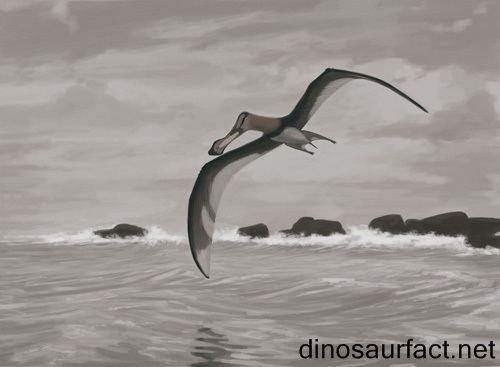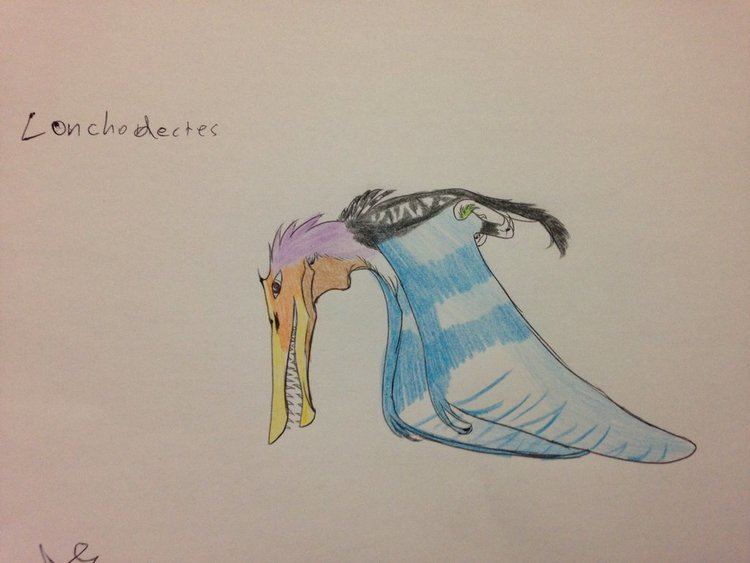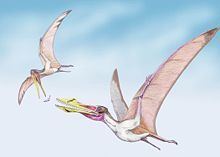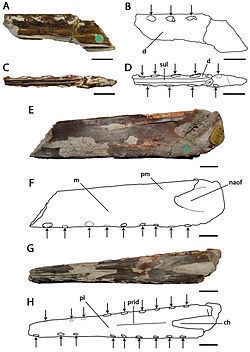Phylum Chordata Order Pterosaurs | Class Reptilia Clade †Azhdarchoidea Rank Genus | |
 | ||
Family †LonchodectidaeHooley, 1914 Similar | ||
Lightning returns ffxiii parte 84 d a 12 ltimos lonchodectes ltimo opcional
Lonchodectes (meaning "lance biter") was a genus of lonchodectid pterosaur from several formations dating to the Turonian (Late Cretaceous, though possibly as early as the Valanginian) of England, mostly in the area around Kent. The species belonging to it had been assigned to Ornithocheirus until David Unwin's work of the 1990s and 2000s, and the genus is not universally accepted as distinct. Several potential species are known; most are based on scrappy remains, and have gone through several other generic assignments. The genus is part of the complex taxonomy issues surrounding Early Cretaceous pterosaurs from Brazil and England, such as Amblydectes, Anhanguera, Coloborhynchus, and Ornithocheirus.
Contents
- Lightning returns ffxiii parte 84 d a 12 ltimos lonchodectes ltimo opcional
- History and species
- Formerly assigned to Lonchodectes
- Classification
- Paleobiology
- References

History and species

Numerous species have been referred to this genus over time, and only those more widely connected with the genus are included here.

The type species, L. compressirostris, is based on BMNH 39410, a partial upper jaw from the Turonian-age Upper Cretaceous Upper Chalk near Kent. Richard Owen named in 1851 as a species of Pterodactylus; it was transferred to Ornithocheirus in 1870 by Harry Govier Seeley, before becoming the type species of Lonchodectes in Reginald Walter Hooley's 1914 review of Ornithocheirus. Confusingly, this species was also long regarded, incorrectly, as the type species of Ornithocheirus.
Formerly assigned to Lonchodectes

Hooley added two other species at this time, both of which had also been originally referred to Pterodactylus, then to Ornithocheirus: L. giganteus, a Cenomanian-age jaw fragment; and L. daviesii, another jaw fragment, from an Albian-age formation.
The genus acquired several more former Pterodactylus and Ornithocheirus species in the 1990s-2000s. L. sagittirostris, based on BMNH R1823, a lower jaw fragment from the ?Valanginian-Hauterivian-age Lower Cretaceous Hastings Beds of East Sussex, and L. platystomus had been acquired by 2000. Two additional species based on jaw fragments, both from the Albian-age Cambridge Greensand, were added by 2003: L. machaerorhynchus and L. microdon, joining L. compressirostris, L. giganteus, L. platystomus, and L. sagittirostris in his listing of valid species. However, L. giganteus, L. machaerorhynchus, and L. microdon have since been assigned to a new genus, Lonchodraco, while L. sagittirostris has been removed from Lonchodectes and treated as a nomen dubium at Pterodactyloidea incertae sedis.
Classification
The genus is poorly known and not universally accepted, as noted above. In Peter Wellnhofer's 1991 The Illustrated Encyclopedia of Pterosaurs the other major recent synopsis of pterosaurs, written before Unwin's work, the species are included with Ornithocheirus (because of L. compressirostris being thought to be the type species), and are in fact the main fossils illustrated to represent the genus. Unwin placed them in their own family, Lonchodectidae, which he grouped with the ctenochasmatoids in 2003, and with the azhdarchoids, including the tapejarids and azhdarchids, in 2006.
Below is a cladogram showing the phylogenetic placement of this genus within Pteranodontia from Andres and Myers (2013).
Paleobiology
Unwin considers Lonchodectes to have been a generalist, like a gull, with its conservative jaws and teeth (like those of the much older Pterodactylus) and small to medium size; he estimates its maximum wingspan at about 2 m (6.6 ft). Lonchodectes had long jaws with many short teeth, and the jaws were compressed vertically, like "a pair of sugar tongs with teeth". At least some of these species had crests on their lower jaws.
Recent studies, however, show that it had limb proportions akin to those of azhdarchids, and might have lived similarly.
